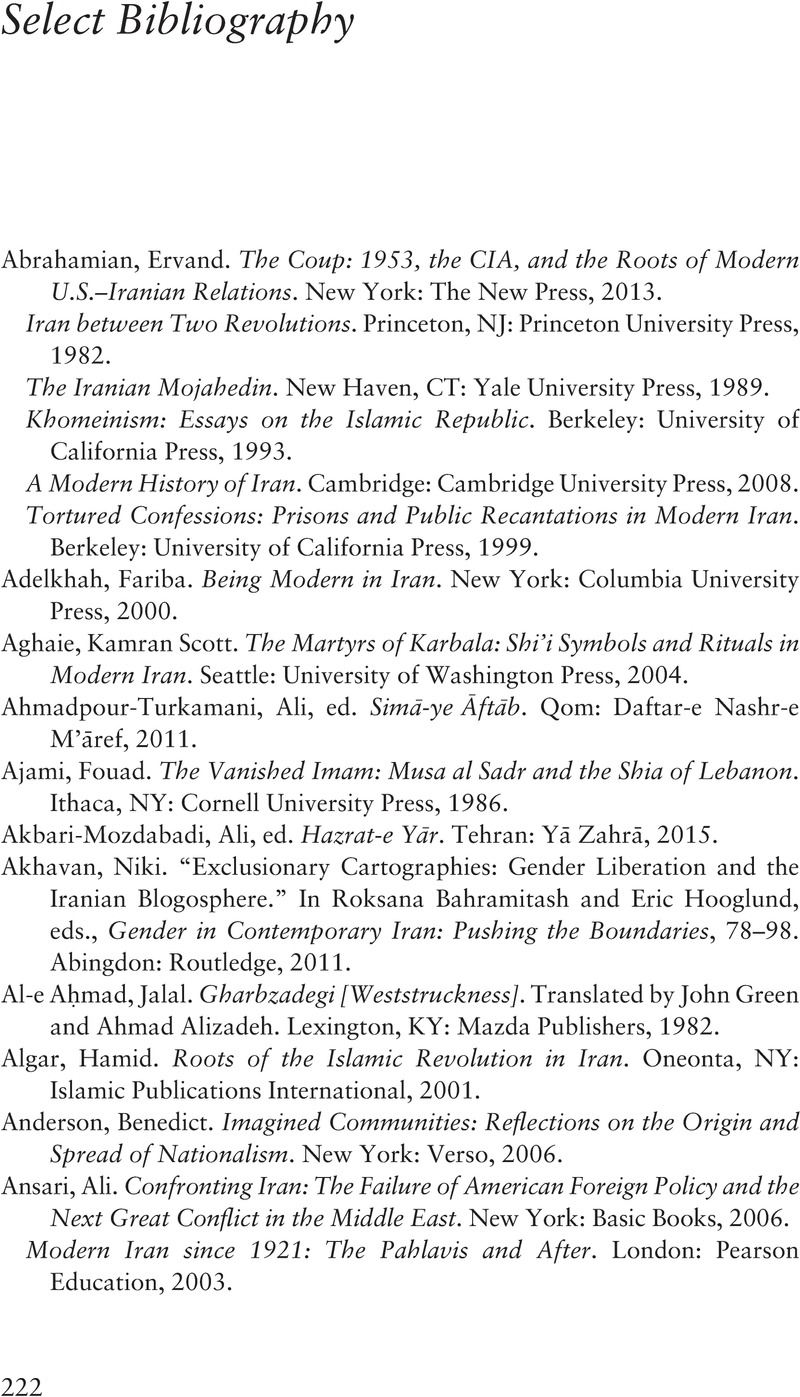Book contents
- The State of Resistance
- The State of Resistance
- Copyright page
- Dedication
- Contents
- Figures
- Acknowledgments
- Note on Transliteration
- 1 Introduction
- 2 The Foreign Shah and the Failure of Pahlavi Nationalism
- 3 The Islamic Republic and Its Culture of Resistance
- 4 Iranian Identity and Popular Music
- 5 Media and the Struggle over Representation
- 6 Conclusion
- 7 Epilogue
- Select Bibliography
- Index
- References
Select Bibliography
Published online by Cambridge University Press: 18 August 2022
- The State of Resistance
- The State of Resistance
- Copyright page
- Dedication
- Contents
- Figures
- Acknowledgments
- Note on Transliteration
- 1 Introduction
- 2 The Foreign Shah and the Failure of Pahlavi Nationalism
- 3 The Islamic Republic and Its Culture of Resistance
- 4 Iranian Identity and Popular Music
- 5 Media and the Struggle over Representation
- 6 Conclusion
- 7 Epilogue
- Select Bibliography
- Index
- References
Summary

- Type
- Chapter
- Information
- The State of ResistancePolitics, Culture, and Identity in Modern Iran, pp. 222 - 228Publisher: Cambridge University PressPrint publication year: 2022

